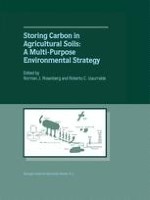2001 | OriginalPaper | Buchkapitel
Potential of Desertification Control to Sequester Carbon and Mitigate the Greenhouse Effect
verfasst von : R. Lal
Erschienen in: Storing Carbon in Agricultural Soils: A Multi-Purpose Environmental Strategy
Verlag: Springer Netherlands
Enthalten in: Professional Book Archive
Aktivieren Sie unsere intelligente Suche, um passende Fachinhalte oder Patente zu finden.
Wählen Sie Textabschnitte aus um mit Künstlicher Intelligenz passenden Patente zu finden. powered by
Markieren Sie Textabschnitte, um KI-gestützt weitere passende Inhalte zu finden. powered by
There is a strong link between desertification of the drylands and emission of CO2 from soil and vegetation to the atmosphere. Thus, there is a strong need to revisit the desertification process so that its reversal can lead to C sequestration and mitigation of the accelerated greenhouse effect. Drylands of the world occupy 6.31 billion ha (Bha) or 47% of the earth’s land area distributed among four climates: hyper-arid (1.0 Bha), arid (1.62 Bha), semi-arid (2.37 Bha) and dry sub-humid (1.32 Bha). Principal soils of drylands are Aridisols (1.66 Bha), Entisols (1.92 Bha), Alfisols (0.38 Bha), Vertisols (0.21 Bha) and others (1.27 Bha). Drylands occur in all continents covering 2.01 Bha in Africa, 2.00 Bha in Asia, 0.68 Bha in Australia, 1.32 Bha in the Americas and 0.30 Bha in Europe. Desertification, degradation of soil and vegetation in drylands resulting from climatic and anthropogenic factors, affects about 1.137 Bha of soils and an additional 2.576 Bha of rangeland vegetation. The rate of desertification is estimated at 5.8 million hectares (Mha) per year. Desertification is a biophysical process (soil, climate and vegetation) driven by socio-economic and political factors. The principal biophysical processes involved, accelerated soil erosion by water and wind and salinization, reduce soil quality and effective rooting depth, decrease vegetal cover, reduce biomass productivity, and accentuate vagaries of climate especially low and variable rainfall. Major consequences of desertification include reduction in the total soil C pool and transfer of C from soil to the atmosphere. Total historic loss of C due to desertification may be 19 to 29 Pg. The rate of C emission from drylands due to accelerated soil erosion is estimated at 0.227 to 0.292 Pg C y−1. Therefore, desertification control and restoration of degraded soils and ecosystems would improve soil quality, increase the pool of C in soil and biomass, and induce formation of secondary carbonates leading to a reduction of C emissions to the atmosphere. Desertification control and soil restoration are affected by establishing vegetative cover with appropriate species, improving water use efficiency, using supplemental irrigation including water harvesting, developing a strategy of integrated nutrient management for soil fertility enhancement, and adopting improved farming systems. Adoption of these improved practices also have hidden carbon costs, especially those due to production and application of herbicides and nitrogen fertilizers, pumping irrigation water etc. Restoration of eroded and salt-affected soils is important to C sequestration. Total potential of C sequestration in drylands through adoption of these measures is 0.9 to 1.9 Pg C y−1 for a 25- to 50-year period beyond which the rate of sequestration is often too low to be important. In addition to enhancing productivity and food security, C sequestration in soils and ecosystem has numerous ancillary benefits. Therefore, identification and implementation of policies is important to facilitate adoption of recommended practices and for commodification of carbon.
